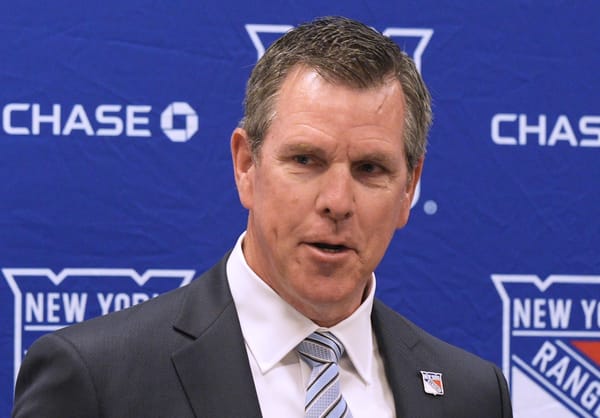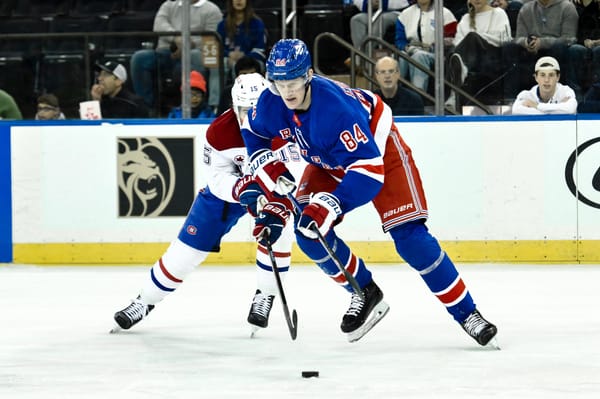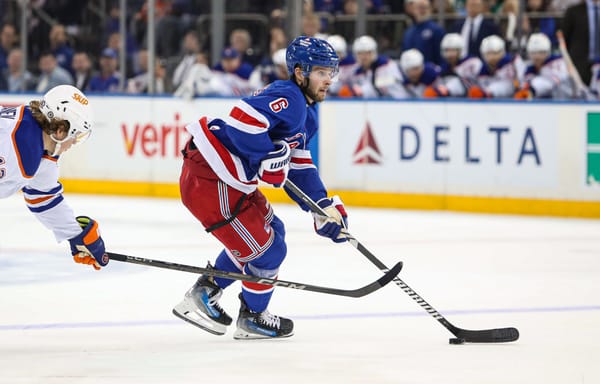The Buyout Game Pt. 2
The discussion continues
On June 5, we took a deep dive into what it would look like if the New York Rangers bought out Marc Staal and Brendan Smith on June 15. It was presented as a hypothetical, inspired by a question we received from a listener for the Bantering the Blueshirts podcast. Given how much feedback we saw both on this forum and on social media, it felt appropriate to offer a follow-up that examined the drawbacks to buying out even one of those burdensome contracts.
Related
Contracts and Clauses
Staal’s contract can’t be buried in the AHL because of his no-movement clause (NMC). That NMC also gives him the final say in whether or not he can be traded.
Conversely, Smith’s can be buried in the AHL, as it was 2017-18. Starting this season, Smith’s modified no-trade clause (NTC) comes into effect. At the request of the team, he must provide a 10-team list of teams he is willing to be dealt to. That gives him some control over his future. In theory, Smith and his agent Anton Thun could stack the deck by listing teams that don’t have the cap or roster space to add him. But, that is only something they would do if Smith doesn’t want to move.
It’s worth mentioning that Smith and his wife welcomed their first child into the world last June. As appealing as a fresh start and a change of scenery might be to the veteran, he might be unwilling to uproot his young family.
Dead Weight
The Rangers have $900k of retained salary from the Ryan Spooner trade and Matt Beleskey and his $1.9 million on the books for one more year. If Beleskey is buried in the minors next season, his contract carries a cap hit of $875,000.
As discussed in the article that preceded this one, the Rangers also have $3,111,111 of dead cap space next season due to the Dan Girardi buy out. Fortunately, that number drops to $1,111,111 in 2020-21 and 2021-22. The punitive nature of Girardi’s buyout serves as an important reminder of just how costly the wrong contract for the wrong player can be.
All told, the Rangers have $4,886,111 in dead cap space next season if Beleskey is in Hartford. If he’s on the main roster, that number is $4,011,111.
Burying Smith in the minors would address the logjam on the blue line and provide $1.075 million in cap relief. However, the remaining $3.275 million of Smith’s AAV would stay on the Rangers’ books. So, if Beleskey and Smith are both in Hartford, the Rangers’ dead cap space would be $8,161,111.
That amount of dead cap could prove to be a giant problem for a team that is currently gearing up to court coveted free agent Artemi Panarin.
Wheeling and Dealing Bad Contracts
On paper, the most palatable solution is trading Smith and/or Staal.
Of course, the problem with trading their contracts is finding a team(s) that would be willing to take on a player whose trade value has been crashing for at least two seasons. Gorton also has to find a team that has the cap space to make a deal work. The salary cap increasing to $83 million next season will help, but trading these contracts is still a complicated — and potentially costly — road to go down.
In all likelihood, the Rangers would have to retain salary in any deal that moves Staal and/or Smith. Because both players have two years left on their deals, retaining no more than 50 percent of either player’s salary for the next two years is far more palatable than the cost of buying them out.
Per the CBA, the percentage of a retained salary cannot exceed 50 percent of a player’s salary (including bonuses) and cap hit. So, at most, the Rangers can retain $2.85 million of Staal’s cap hit and $2.175 million of Smith’s cap hit in a deal. This sounds like a promising solution on paper because it is one — but it does take two to tango.
Would the Rangers have to give up futures and/or other assets to make such a deal work? If you want to see what anguish looks like, all you need to do is mention Teuvo Teravainen to a Chicago Blackhawks fan. Right now we have no way of knowing what it will cost the Rangers to make a deal involving one of these two defenders, but we know it will cost something. Remember, the NHL’s other 30 general managers know just how unappealing buyouts are.
Gorton wants this team to be competitive sooner rather than later, which is why he is setting his sights on Panarin. One way or another, that will influence what he does with Staal and Smith. At the moment, there is far too much cap tied-up in defenders who will not be a part of the competitor that emerges from this rebuilding club. Something has to give.
All contract and player salary data courtesy of CapFriendly.com.




